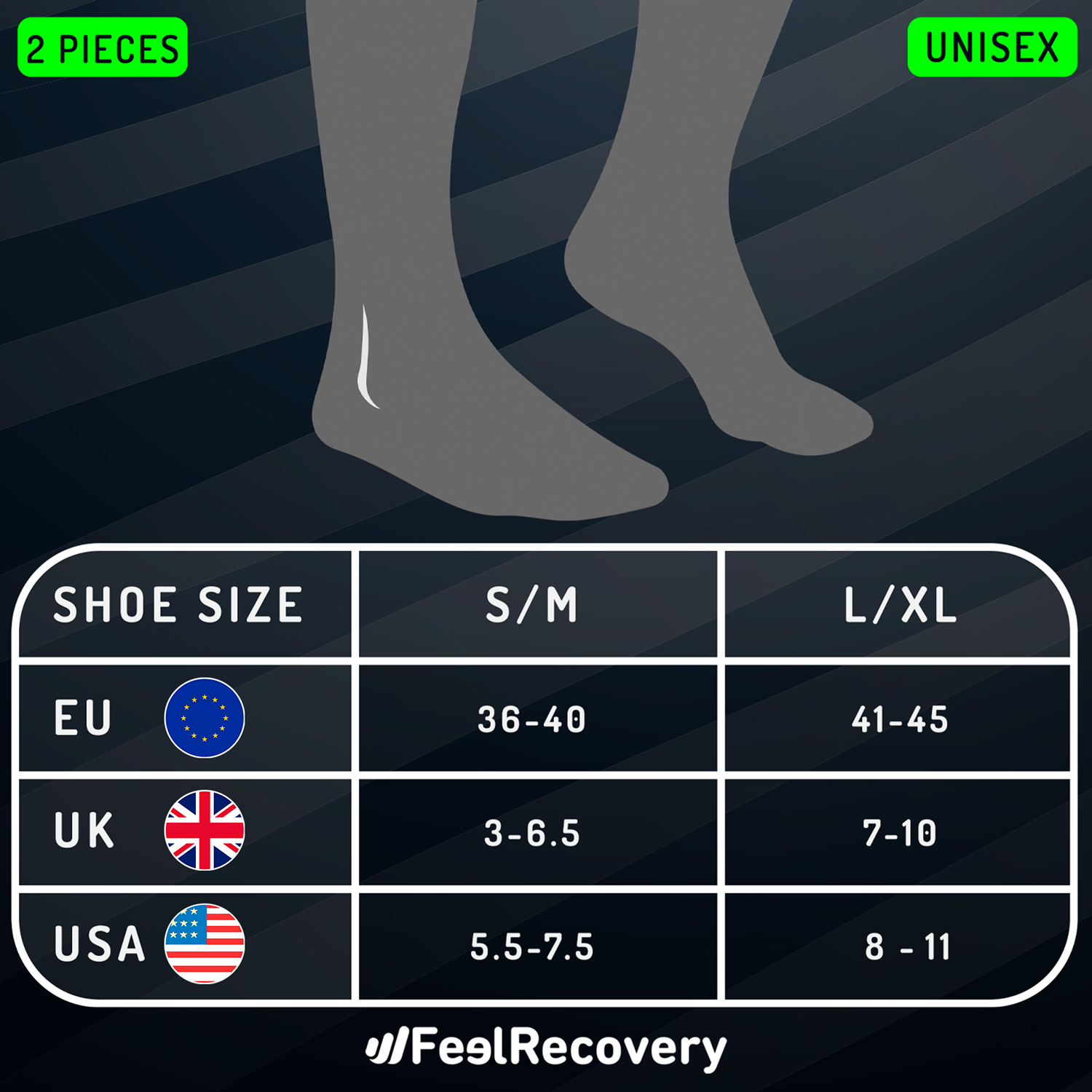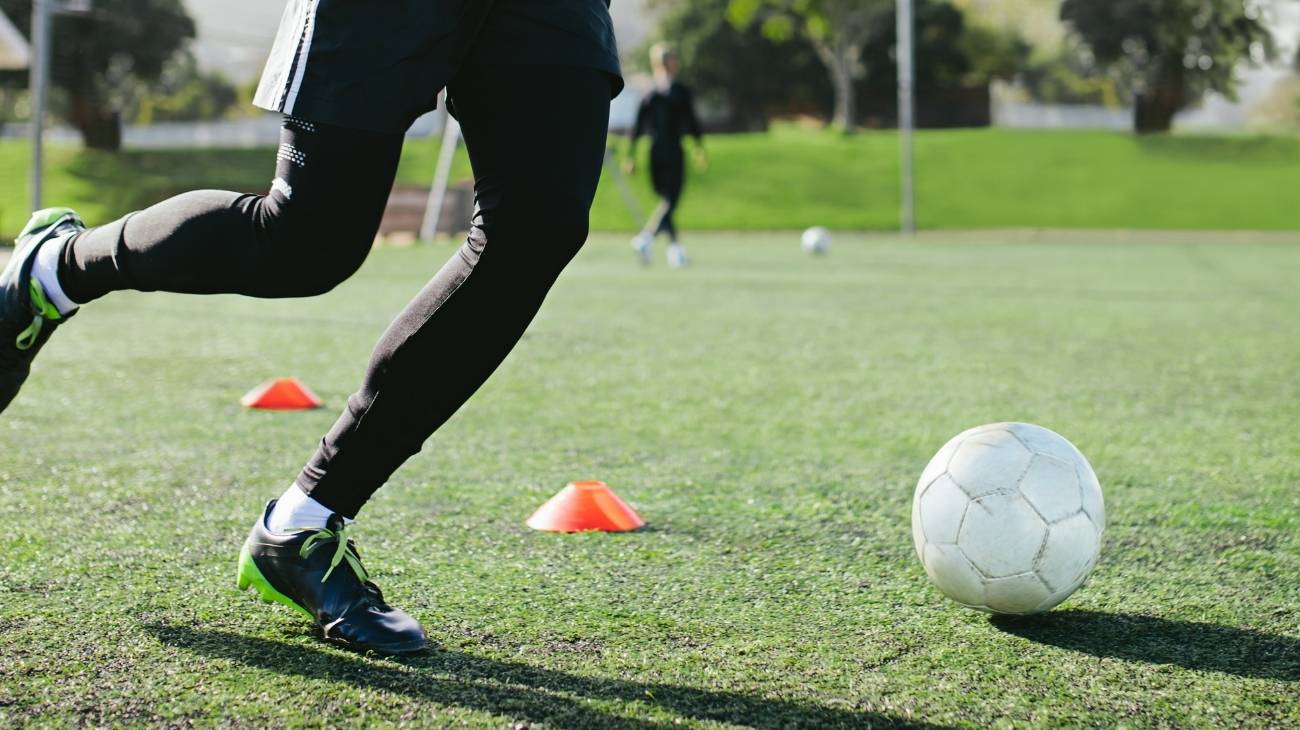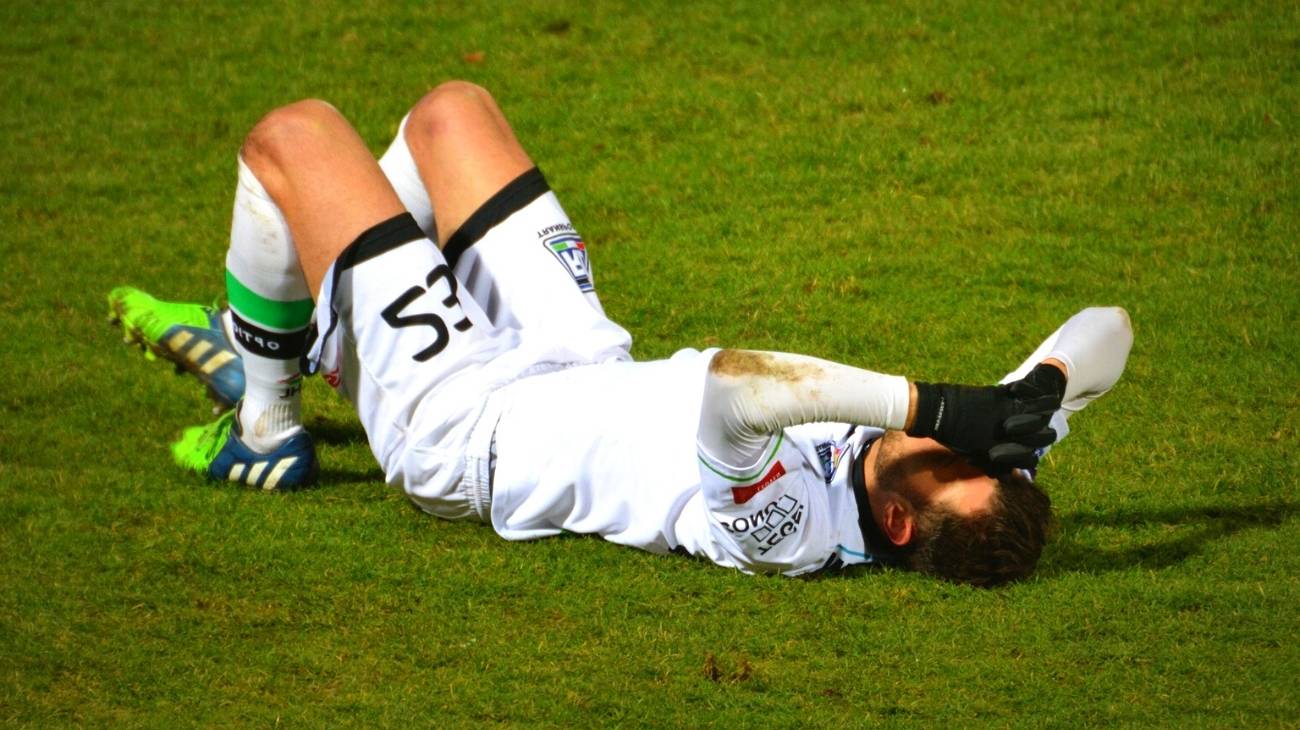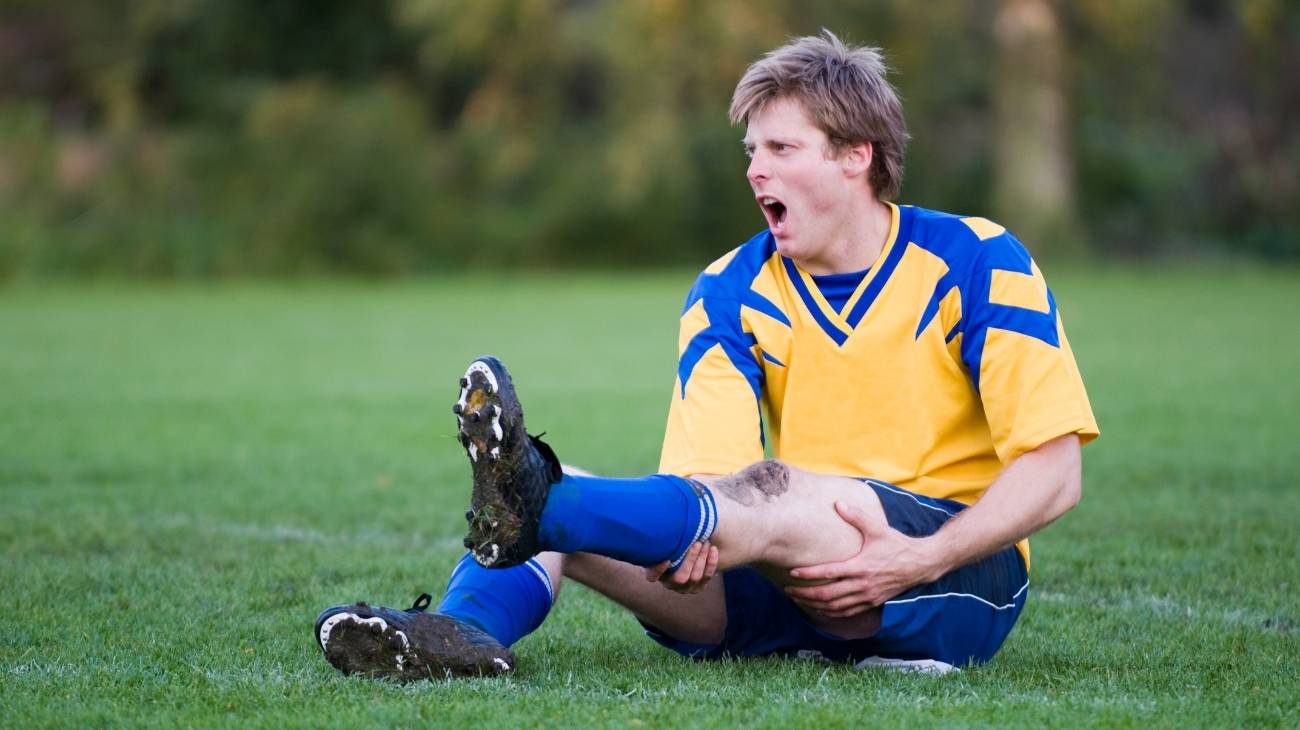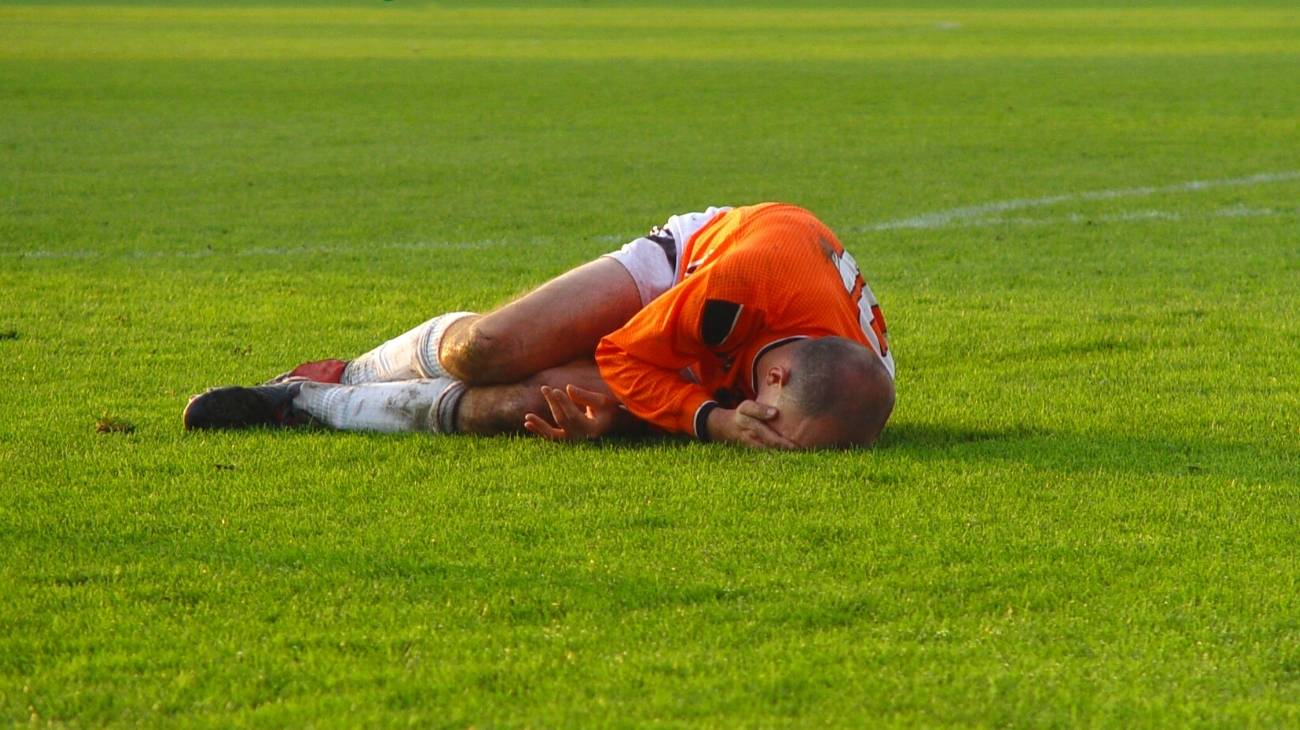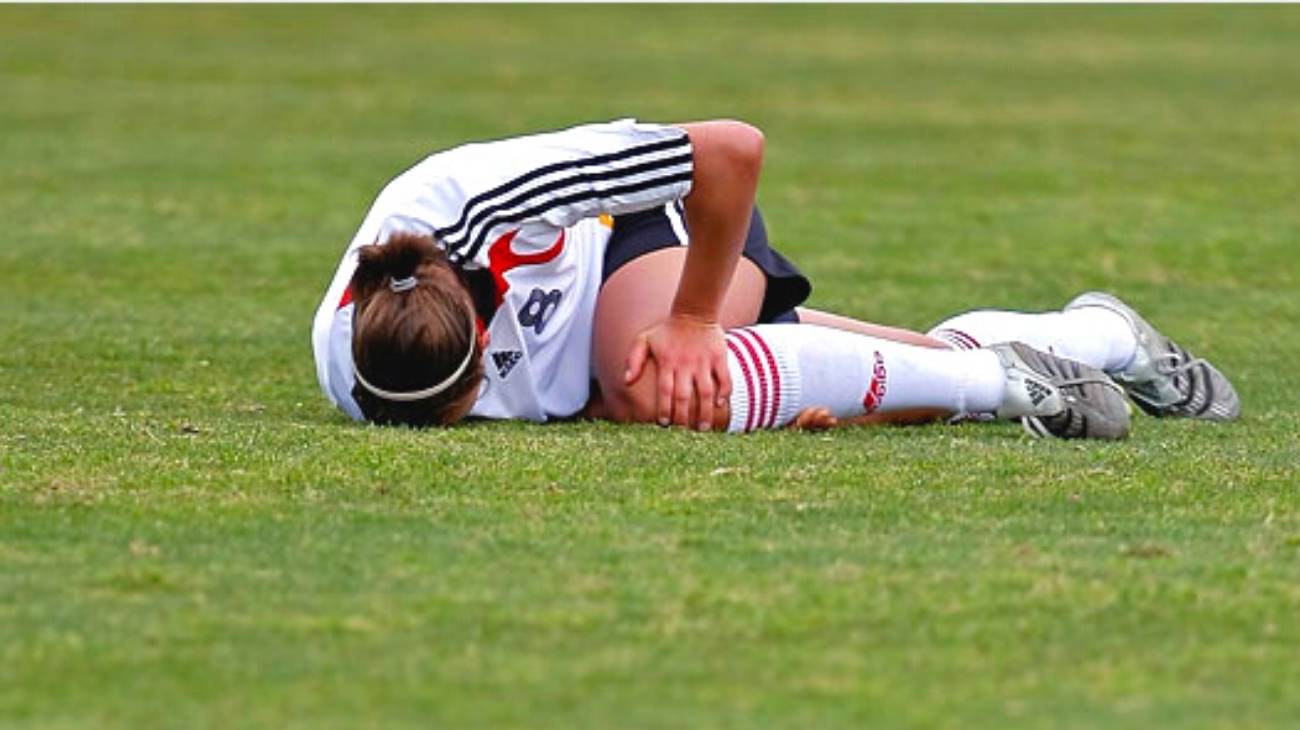The ankle is undoubtedly one of the joints that causes the most problems for football players because it is where all the weight of the body rests and where a great deal of tension accumulates due to kick-offs, runs and, above all, ball strikes.
For this reason, as a football player you must take great care of your ankles as they could keep you out of action for several weeks. In this article we present the most common ankle joint injuries and how to treat them with the PRICE therapy in the first moments after they occur.
What are the most common types of ankle injuries when playing football?
Below you will learn about the main ailments that affect football players in this joint, so that you will know how to identify them when you suffer one of them.
Sprained ankle
Occurs when the ankle is twisted in an unusual way, causing the ligaments to be stretched to breaking point, causing swelling and pain in the area. This injury is the most common for football players, as they overexpose the joint to aggressive tackles from opponents.
This injury has 3 levels of severity:
- First-degree sprain: this is an overstretching of the ligament causing small microscopic tears. The athlete usually has pain, swelling, bruising and difficulty moving the joint.
- Second degree sprain: is the partial rupture of the ligament, in turn causing mild pain and swelling, preventing movement and difficulty in supporting the foot, involving a recovery period of several weeks.
- Third-degree sprain: complete rupture of the ligament, this is one of the most serious injuries, with symptoms such as acute pain, bruising, instability of the ankle and inability to bear weight. This type of injury requires immobilisation of the foot and may also require surgery and physiotherapy, with a recovery period of approximately six to eight weeks.
Peroneal tendon injury
The peroneal tendons are tissues that run through the ankle and allow us to keep us stabilised and free from sprains. Injuries to these tendons are directly related to a sprain generated by strong tackles from opponents that can damage them causing them to tear partially or completely.
Another common injury is tendonitis, a common injury in football players, which is characterised by inflammation of one or both peroneal tendons, which become overloaded due to the wear and tear and stress they accumulate from the constant running and kicking players do in each match.
Achilles tendon tendonitis
The Achilles tendon is the thick, fibrous cord that connects the calf muscles to the calcaneus. Tendonitis occurs when it becomes inflamed or irritated, either from a blow from an opponent or from accumulating wear and tear after several matches in a relatively short period of time.
The most obvious symptom is a sharp, constant pain at the base of the calf that requires a lot of rest to heal before resuming competitive activity.
Ankle fracture
The ankle as a joint is composed of a ring that allows the connection between the talus, tibia and fibula. Within this ring stability is provided by 2 bones; the medial malleolus of the tibia and the lateral malleolus of the fibula. When one of these two bones is fractured, the ankle loses stability and generates inflammation and acute pain that does not even allow walking.
This injury is very common in football and can be caused either by a very violent tackle by an opponent or by a bad landing after a jump to dispute a divided ball. Depending on the extent of the injury, it may require immobilisation in a cast, or reconstructive surgery if the joint is completely broken.
Best products for the recovery of ankle injuries in football player
Bestseller
-
Ice Pack for Foot - Cold Therapy Socks (Black)
£20,95 -
Ice Pack for Foot - Cold Therapy Socks (Green)
£20,95 -
Ice Pack for Foot - Cold Therapy Socks (Pink)
£20,95 -
Microwavable Heated Slippers (Hearts)
£24,95 -
Microwavable Heated Slippers (Oxford)
£24,95 -
Microwavable Heated Slippers (Sport)
£24,95 -
Microwaveable Wheat Bag for Pain Relief (Hearts)
£20,95 -
Microwaveable Wheat Bag for Pain Relief (Oxford)
£20,95 -
Microwaveable Wheat Bag for Pain Relief (Sport)
£20,95
-
2 Ankle Compression Sleeve (Black/Gray)
£20,95 -
2 Ankle Compression Sleeve (Green/Navy)
£20,95 -
2 Ankle Compression Sleeve (Pink/Bordeaux)
£20,95 -
Sport Compression Socks (1 Pair) (Black/Gray)
£20,95 -
Sport Compression Socks (1 Pair) (Green/Navy)
£20,95 -
Sport Compression Socks (1 Pair) (Pink/Bordeaux)
£20,95
How to apply the RICE therapy to treat ankle injuries in football players?
The RICE therapy is a series of steps that a person must follow after sustaining an injury. The aim is to alleviate the first symptoms of the injury so that the inflammation and pain are tolerable. This method received an update called PRICE which stands for: Protection, Rest, Ice, Compression and Elevation.
- Protection: the ankle is bandaged or even splinted in the case of a fracture. This prevents further blows or sudden movements that could aggravate the injury.
- Rest: stopping physical activity will be essential to prevent an unfortunate movement from worsening the condition of the ankle. Even walking should be done with the assistance of crutches.
- Ice: ice is used to reduce swelling by applying a cold compress to the side of the ankle that is most affected and swollen.
- Compression: Compression is applied so that the inflammation does not continue to progress and to maintain the stability of the joint so that no further damage is caused. This can be done either with a bandage or with a compression ankle brace.
- Elevation: Finally, the foot of the injured ankle is elevated so that the blood supply is reduced and the swelling does not continue to progress.
This therapy should only be used as first aid or therapy for minor injuries such as first degree sprains. What we should do is go to our doctor to have the injury analysed and determine the most effective treatment possible.
References
- Ekstrand, J., & Tropp, H. (1990). The incidence of ankle sprains in soccer. Foot & ankle, 11(1), 41-44. https://journals.sagepub.com/doi/abs/10.1177/107110079001100108
- Giza, E., Fuller, C., Junge, A., & Dvorak, J. (2003). Mechanisms of foot and ankle injuries in soccer. The American journal of sports medicine, 31(4), 550-554. https://journals.sagepub.com/doi/abs/10.1177/03635465030310041201
- Ergen, E., & Ulkar, B. (2008). Proprioception and ankle injuries in soccer. Clinics in sports medicine, 27(1), 195-217. https://www.sciencedirect.com/science/article/abs/pii/S0278591907000944
- Nery, C., Raduan, F., & Baumfeld, D. (2016). Foot and ankle injuries in professional soccer players: diagnosis, treatment, and expectations. Foot and ankle clinics, 21(2), 391-403. https://www.foot.theclinics.com/article/S1083-7515(16)00021-8/fulltext
- Andersen, T. E., Floerenes, T. W., Arnason, A., & Bahr, R. (2004). Video analysis of the mechanisms for ankle injuries in football. The American journal of sports medicine, 32(1_suppl), 69-79. https://journals.sagepub.com/doi/abs/10.1177/0363546503262023
- Inklaar, H. (1994). Soccer injuries: I: incidence and severity. Sports medicine, 18, 55-73. https://link.springer.com/article/10.2165/00007256-199418010-00006
- Inklaar, H. (1994). Soccer Injuries: II: Aetiology and Prevention. Sports medicine, 18, 81-93. https://link.springer.com/article/10.2165/00007256-199418020-00002
- Ekstrand, J., & Gillquist, J. (1983). Soccer injuries and their mechanisms: a prospective study. Medicine and science in sports and exercise, 15(3), 267-270. https://europepmc.org/article/med/6621313
- Dvorak, J., & Junge, A. (2000). Football injuries and physical symptoms. The American journal of sports medicine, 28(5_suppl), 3-9. https://pubmed.ncbi.nlm.nih.gov/11032101/
- Faude, O., Rößler, R., & Junge, A. (2013). Football injuries in children and adolescent players: are there clues for prevention?. Sports medicine, 43, 819-837. https://link.springer.com/article/10.1007/s40279-013-0061-x








